Dog Grooming Business Plans: A Comprehensive Guide to Starting and Growing Your Pet Grooming Venture
Welcome to the world of dog grooming business plans! If you’re a pet lover with a passion for making dogs look their best, starting a dog grooming business can be a rewarding venture. However, diving into the pet grooming industry requires careful planning and execution. In this guide, we’ll walk you through a step-by-step process to create a successful and thriving dog grooming business.
Understanding the Pet Grooming Industry
The pet grooming industry has experienced significant growth in recent years, driven by the increasing number of pet owners who view their furry companions as family members. Pet grooming is no longer just a luxury; it has become an essential service for many pet owners who want to keep their pets clean, healthy, and looking their best. In this section, we will delve deeper into the various aspects of the pet grooming industry to help you gain a comprehensive understanding.
1. Rising Demand for Pet Grooming Services
With the growing popularity of pet ownership, the demand for professional grooming services has seen a substantial surge. Pet owners are willing to invest in grooming to ensure their pets’ well-being and overall appearance. As a result, the pet grooming industry has become a lucrative market with immense potential for aspiring entrepreneurs.
2. Diverse Range of Grooming Services
The pet grooming industry offers a wide range of services to cater to different pet breeds and customer preferences. From basic grooming services like bathing, brushing, and ear cleaning to specialized treatments such as dental care, de-shedding, and spa sessions, the options are vast and varied. Understanding these services will help you determine your niche and cater to specific target audiences effectively.
3. Growing Emphasis on Pet Health and Hygiene
In recent years, there has been a growing emphasis on pet health and hygiene, leading to increased awareness among pet owners. Regular grooming not only enhances a pet’s physical appearance but also promotes good health by preventing skin issues, matting, and other health-related problems. As a result, pet owners are more likely to seek professional grooming services to maintain their pets’ well-being.
4. Influence of Pet Fashion and Trends
Similar to human fashion, the pet grooming industry is also influenced by trends and styles. Pet owners often seek grooming services to have their pets groomed according to the latest fashion trends, special occasions, or seasonal themes. Keeping abreast of these trends can be beneficial in attracting fashion-conscious pet owners to your grooming salon.
5. Increasing Pet Humanization
Pet humanization refers to the growing trend of treating pets as family members and providing them with the best possible care. Pet owners are more willing to spend on premium grooming services, organic products, and specialized treatments, reflecting the emotional connection they have with their pets. Understanding this emotional bond will help you tailor your services to meet the unique needs of pet parents.
6. Impact of Social Media and Influencers
Social media platforms have played a significant role in promoting pet grooming services and products. Pet influencers and celebrities on platforms like Instagram have a considerable influence on pet owners’ choices and preferences. Leveraging social media marketing strategies can be advantageous in reaching a broader audience and creating brand awareness for your grooming business.
7. Regional and Cultural Variations
The pet grooming industry’s landscape may vary from region to region and even within different cultural contexts. Factors like climate, cultural attitudes towards pets, and income levels can impact the demand and types of grooming services sought. Understanding these variations will help you tailor your business approach to suit your specific market.
8. Competition and Differentiation
As the pet grooming industry continues to grow, so does the competition. Identifying your unique selling points and differentiating your services from competitors will be crucial for your business’s success. Offering specialized services or incorporating innovative grooming techniques can set you apart and attract a loyal customer base.
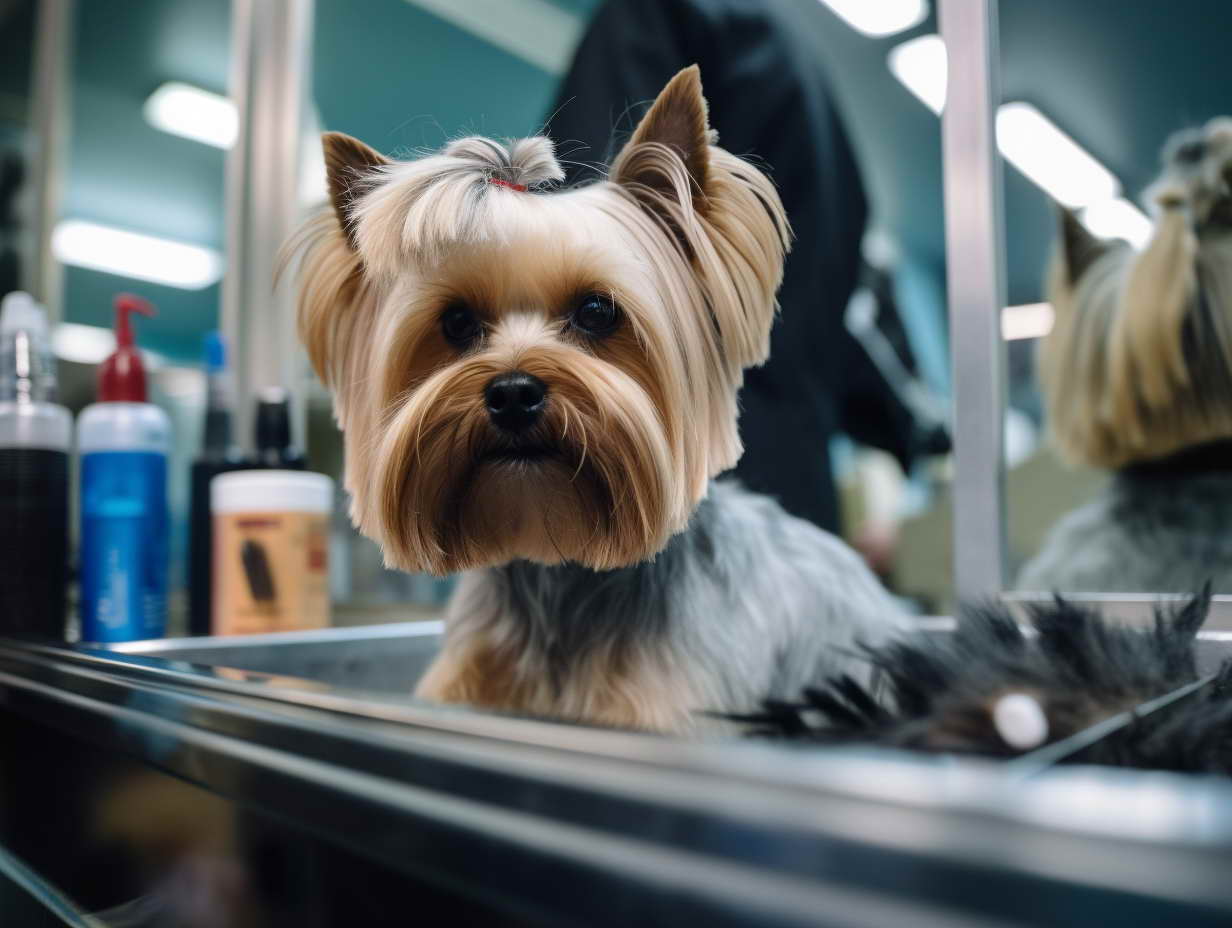
Market Research and Analysis
Market research and analysis are integral steps in creating a robust dog grooming business plan. Understanding the market dynamics, customer preferences, and industry trends will help you make informed decisions and develop strategies to position your business for success. In this section, we’ll explore the essential aspects of conducting market research and analysis for your dog grooming venture.
1. Identifying Target Demographics
One of the first steps in market research is identifying your target demographic. Determine the primary group of pet owners you aim to serve based on factors such as age, income level, location, and lifestyle. For instance, you might cater to busy urban professionals who seek convenient and premium grooming services for their pets.
2. Assessing Demand for Pet Grooming Services
Conduct thorough research to understand the demand for pet grooming services in your area. Analyze the number of pets in the region, the frequency of grooming appointments, and the existing competition. Identifying gaps in the market can provide opportunities to meet unmet needs.
3. Analyzing Competitors
Understanding your competitors is essential for positioning your dog grooming business effectively. Research local grooming salons and mobile groomers to assess their services, pricing, and customer reviews. Identify areas where you can differentiate yourself and offer unique services.
4. Market Trends and Industry Outlook
Stay updated with current market trends and the overall outlook of the pet grooming industry. Trends like pet pampering, eco-friendly grooming products, or mobile grooming services can influence your business decisions. By being proactive in adapting to industry changes, you can maintain a competitive edge.
5. Pricing Analysis
Analyze the pricing strategies of your competitors to determine the average rates for grooming services in your area. Setting competitive yet profitable prices is vital for attracting customers while ensuring your business remains financially viable.
6. Customer Feedback and Preferences
Gather feedback from potential customers and pet owners in your target market. Conduct surveys or focus groups to understand their grooming preferences, pain points, and desired services. This information can guide you in tailoring your services to meet customer expectations.
7. Local Regulations and Permits
Be aware of any local regulations or permits required to operate a dog grooming business in your area. Ensure compliance with zoning laws, health department regulations, and any other legal requirements.
8. Identifying Growth Opportunities
Identify potential areas for growth and expansion within the pet grooming industry. For example, you might consider offering additional pet-related services, partnering with pet stores, or collaborating with veterinarians to broaden your customer base.
9. Seasonal Demand and Trends
Understand the seasonal fluctuations in demand for pet grooming services. For instance, you may experience increased demand during holidays, summer months, or specific pet-related events. Preparing for these trends can help you optimize your business operations.
10. SWOT Analysis
Conduct a SWOT (Strengths, Weaknesses, Opportunities, Threats) analysis for your dog grooming business. Assessing your business’s internal strengths and weaknesses, as well as external opportunities and threats, will aid in developing strategies to mitigate risks and capitalize on strengths.
11. Customer Acquisition Strategies
Based on your market research, outline effective customer acquisition strategies. Consider online marketing, referral programs, partnerships with pet-related businesses, and community outreach to attract new customers.
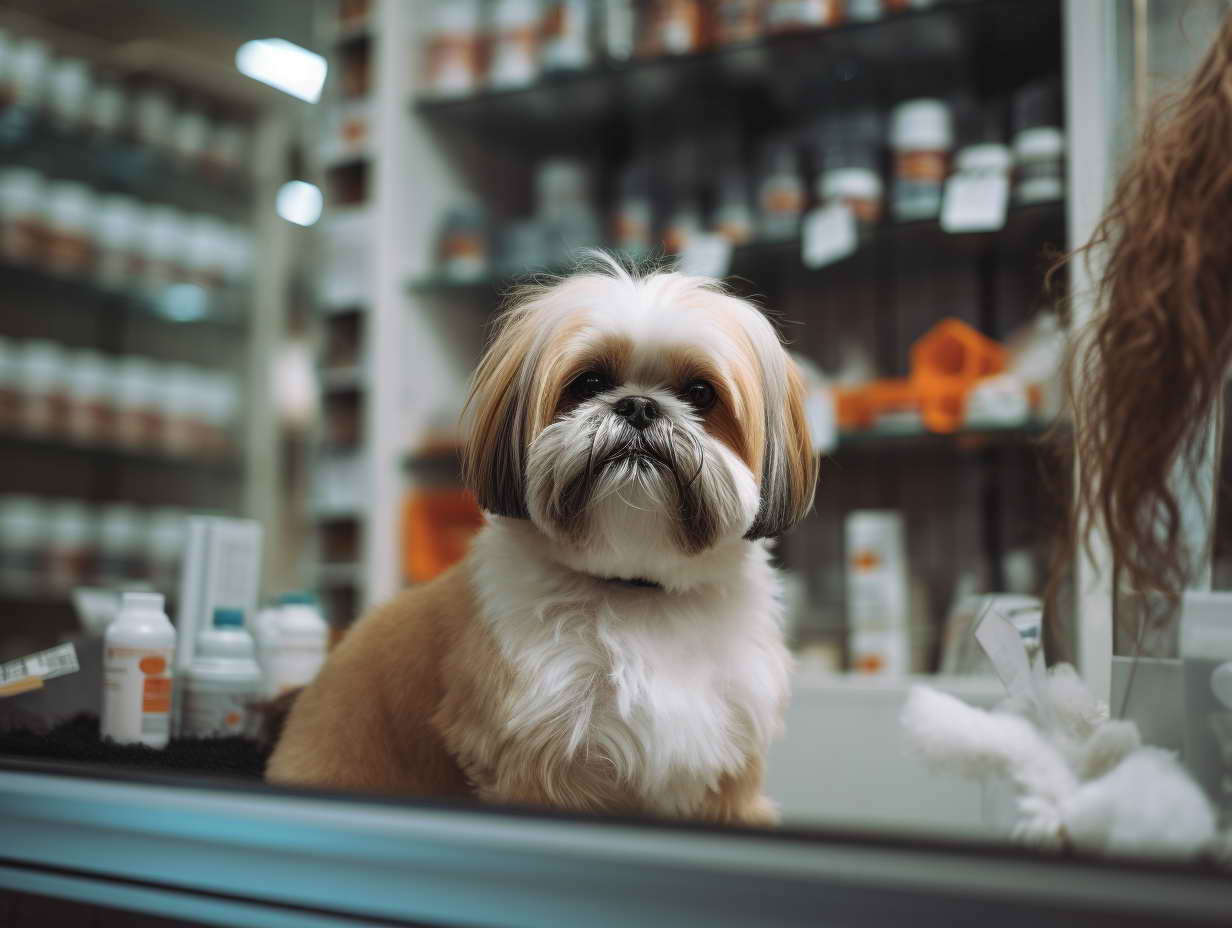
Defining Your Dog Grooming Services
Defining a comprehensive range of dog grooming services is essential for creating a successful and customer-centric dog grooming business plan. By offering a diverse set of services, you can cater to the unique needs of different dog breeds and pet owners. Below, we explore a variety of dog grooming services that will allow your business to stand out in the competitive pet grooming industry.
1. Bathing and Conditioning
Regular bathing is a fundamental grooming service that keeps dogs clean and fresh. Use high-quality, pet-friendly shampoos and conditioners to ensure a thorough and gentle cleansing experience for dogs of all sizes and coat types.
2. Brushing and De-Shedding
Brushing is crucial for maintaining a dog’s coat health and reducing shedding. Offer brushing services tailored to different coat types, such as short-haired, long-haired, and double-coated breeds, to help minimize shedding and matting.
3. Haircuts and Styling
Providing professional haircuts and styling services allows pet owners to customize their dog’s appearance. From breed-specific cuts to creative and unique styles, offer a range of grooming options to suit every pet owner’s preferences.
4. Nail Trimming and Paw Care
Trimming a dog’s nails is essential for their comfort and well-being. Offer nail trimming services and paw care, including moisturizing paw pads, to keep dogs’ paws healthy and prevent any discomfort.
5. Ear Cleaning and Sanitizing
Proper ear cleaning and sanitization are vital to prevent ear infections and discomfort in dogs. Use gentle solutions and techniques to clean and care for dogs’ ears during grooming sessions.
6. Dental Hygiene
Oral health is crucial for a dog’s overall well-being. Offer dental hygiene services such as brushing, plaque removal, and breath freshening to promote good oral health for pets.
7. Flea and Tick Treatment
Providing flea and tick treatment services ensures that dogs remain protected from these pesky parasites. Offer safe and effective treatments to keep pets and their living environments flea and tick-free.
8. Spa and Relaxation Treatments
Pamper pets with spa and relaxation treatments to enhance their grooming experience. Offer services like aromatherapy baths, massage sessions, and facial treatments to create a calming and enjoyable environment for dogs.
9. Medicated Baths and Skin Care
For dogs with skin conditions or allergies, offer medicated baths and specialized skin care treatments. Use veterinarian-approved products to soothe and address specific skin issues.
10. Anal Gland Expression
Anal gland expression is a crucial service to prevent discomfort and potential health problems in dogs. Offer gentle and professional expression techniques as part of your grooming services.
11. Specialized Grooming for Senior Dogs
Tailor grooming services to meet the needs of senior dogs, including gentle handling, shorter grooming sessions, and extra care for aging joints and mobility issues.
12. Creative Grooming and Color Services
Stand out by offering creative grooming and color services for pet owners who want to add flair to their dog’s appearance. Use pet-safe color products and creative designs to cater to fashionable pet parents.
13. Deodorizing and Freshening Services
Offer deodorizing and freshening treatments to leave dogs smelling pleasant and clean after their grooming sessions. Use pet-friendly, non-toxic deodorizers for a refreshing finishing touch.
14. Allergy-Free and Organic Grooming Options
Cater to environmentally conscious pet owners by offering allergy-free and organic grooming products and services. This will appeal to those who prefer eco-friendly and chemical-free options for their pets.
15. Mobile Grooming Services
Consider offering mobile grooming services for pet owners who prefer the convenience of grooming at their doorstep. A well-equipped mobile grooming van can expand your reach and offer flexible grooming options.
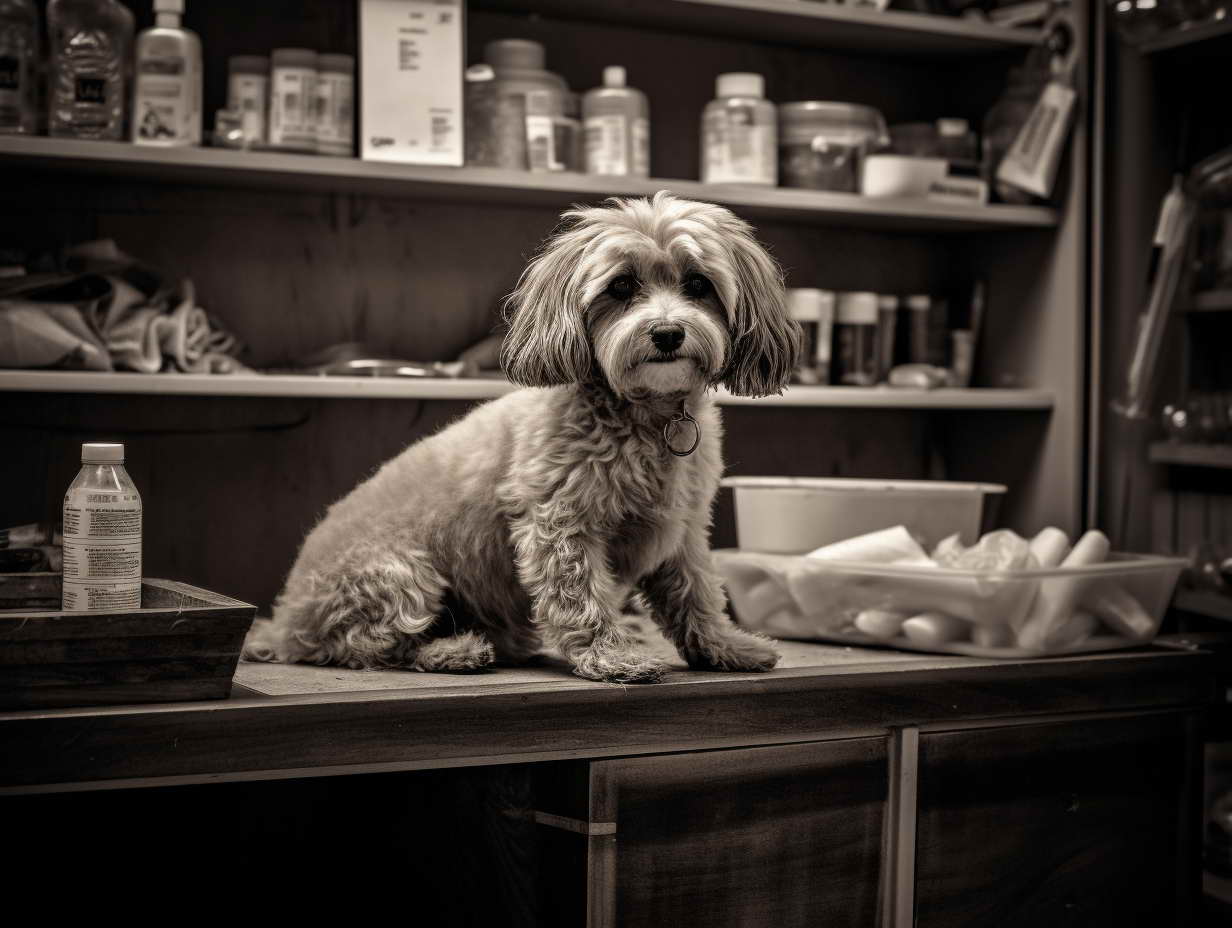
Creating a Budget and Financial Plan
Developing a well-structured budget and financial plan is a critical step in establishing a successful dog grooming business. A comprehensive financial strategy will help you allocate resources effectively, manage expenses, and ensure financial stability for your venture. In this section, we’ll explore the key components of creating a budget and financial plan for your dog grooming business, ensuring its long-term sustainability.
1. Initial Investment and Start-Up Costs
Begin by estimating the initial investment required to launch your dog grooming business. Include expenses like leasing or purchasing a location, renovating the grooming salon, purchasing grooming equipment, and obtaining necessary licenses and permits. Research and compare prices to ensure accurate budgeting.
2. Operating Expenses
Account for the day-to-day operating expenses of your dog grooming salon. These may include rent, utilities, insurance, staff wages, grooming supplies, marketing expenses, and ongoing grooming equipment maintenance. Creating a detailed list of expenses will give you a clear picture of your salon’s financial requirements.
3. Contingency Fund
Always allocate a contingency fund for unexpected expenses or emergencies that may arise during the initial phase of your business. Having a safety net ensures that you can handle unforeseen challenges without compromising the quality of your services.
4. Revenue Projections
Estimate your monthly and annual revenue projections based on your grooming service prices and the demand for your services. Consider factors like the number of grooming appointments you can handle each day, peak seasons, and pricing strategies to derive realistic revenue projections.
5. Break-Even Analysis
Conduct a break-even analysis to determine the point at which your dog grooming business will start generating profits. This analysis will help you understand how much revenue you need to cover your fixed and variable costs and achieve profitability.
6. Financial Forecasting
Develop a financial forecast that outlines your expected revenue and expenses for the first year or two of your dog grooming business. This forecasting can help you identify potential financial challenges and plan strategies to overcome them.
7. Pricing Strategy
Establish a pricing strategy that reflects the quality of your services, local market rates, and the value you offer to customers. Your pricing should be competitive yet profitable, allowing you to cover expenses while delivering excellent grooming services.
8. Cash Flow Management
Maintain a close eye on your cash flow to ensure that your dog grooming business remains financially stable. Delayed payments from customers and irregular expenses can impact your cash flow, so implement strategies to manage it effectively.
9. Cost-Effective Marketing
Plan cost-effective marketing strategies to promote your dog grooming services. Utilize digital marketing, social media, and community outreach to reach potential customers without overspending on advertising.
10. Long-Term Financial Goals
Set long-term financial goals for your dog grooming business, such as achieving a specific annual revenue target or expanding to multiple locations. These goals will guide your decisions and drive your business toward growth and success.
11. Tracking and Reviewing Financial Performance
Regularly track and review your dog grooming business’s financial performance. Analyze your budget versus actual expenses, revenue growth, and profitability. This monitoring will allow you to make data-driven decisions and adjust your financial plan as needed.
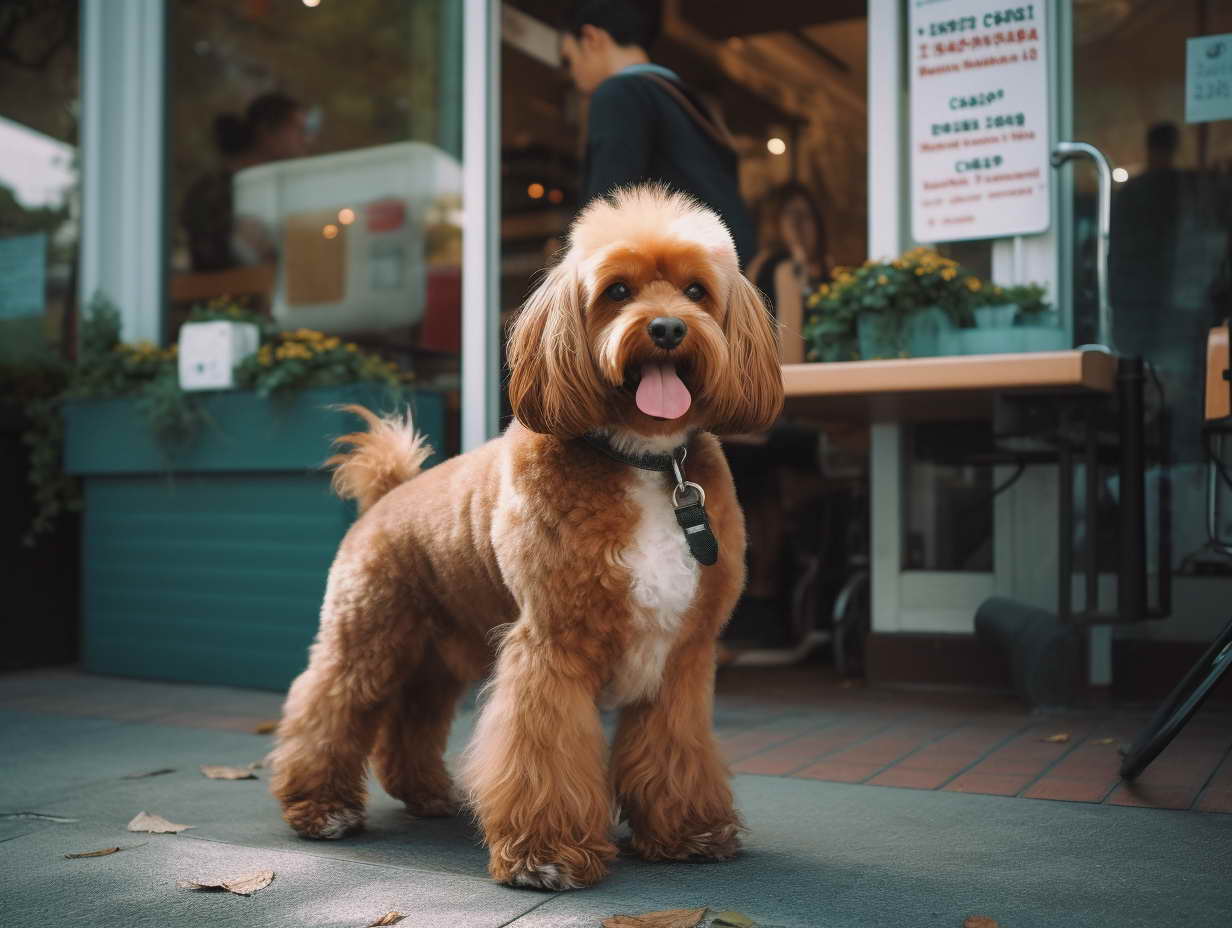
Securing Funding for Your Dog Grooming Business
Securing adequate funding is a crucial step in turning your dog grooming business plan into a reality. Whether you’re starting a small grooming salon or aiming for a larger-scale operation, having access to sufficient capital is essential for covering start-up costs and ensuring smooth business operations. In this section, we’ll explore various funding options and strategies to help you secure the necessary funds for your dog grooming venture.
1. Self-Financing and Personal Savings
One of the most straightforward funding options is self-financing or using personal savings to invest in your dog grooming business. If you have sufficient savings set aside, this can be a convenient and low-cost way to start your venture.
2. Family and Friends
Consider seeking financial support from family members and friends who believe in your vision and business plan. Creating clear terms and agreements for repayment or equity sharing is essential to maintain personal relationships.
3. Small Business Loans
Explore the possibility of obtaining a small business loan from banks or financial institutions. A well-structured business plan and a solid credit history will increase your chances of securing a loan.
4. Investors and Venture Capital
Attract potential investors or venture capital firms who are interested in the pet industry and see the potential in your dog grooming business. Be prepared to pitch your business idea and showcase your market research and growth plans.
5. Crowdfunding Campaigns
Innovative funding platforms like crowdfunding can help you raise capital from a large pool of individuals who support your business concept. Offer incentives and rewards to backers to encourage participation.
6. Government Grants and Subsidies
Research local and national government grants or subsidies available for small businesses in the pet industry. These funds can provide valuable financial support for your grooming venture.
7. Pet Industry Associations and Contests
Some pet industry associations and contests offer funding opportunities for promising entrepreneurs. Participate in relevant competitions or reach out to pet-related organizations for potential funding sources.
8. Pet Business Incubators and Accelerators
Explore opportunities to join pet business incubators or accelerators that provide funding, mentorship, and resources to help your grooming business grow.
9. Online Lenders and Alternative Financing
Consider online lenders and alternative financing options, such as peer-to-peer lending or merchant cash advances. These options may offer quicker access to funds but be mindful of interest rates and repayment terms.
10. Franchise Opportunities
If you’re interested in a franchise model, investigate franchisors that offer financing support for their franchisees. This can be a more structured way to start your dog grooming business with established brand recognition.
11. Microloans and Community Development Programs
Some microloan programs and community development organizations focus on supporting small businesses in local communities. Research these resources for potential funding assistance.
12. Personal Equity and Collateral
In certain cases, you may use personal equity, such as real estate or valuable assets, as collateral for securing funding for your dog grooming business.
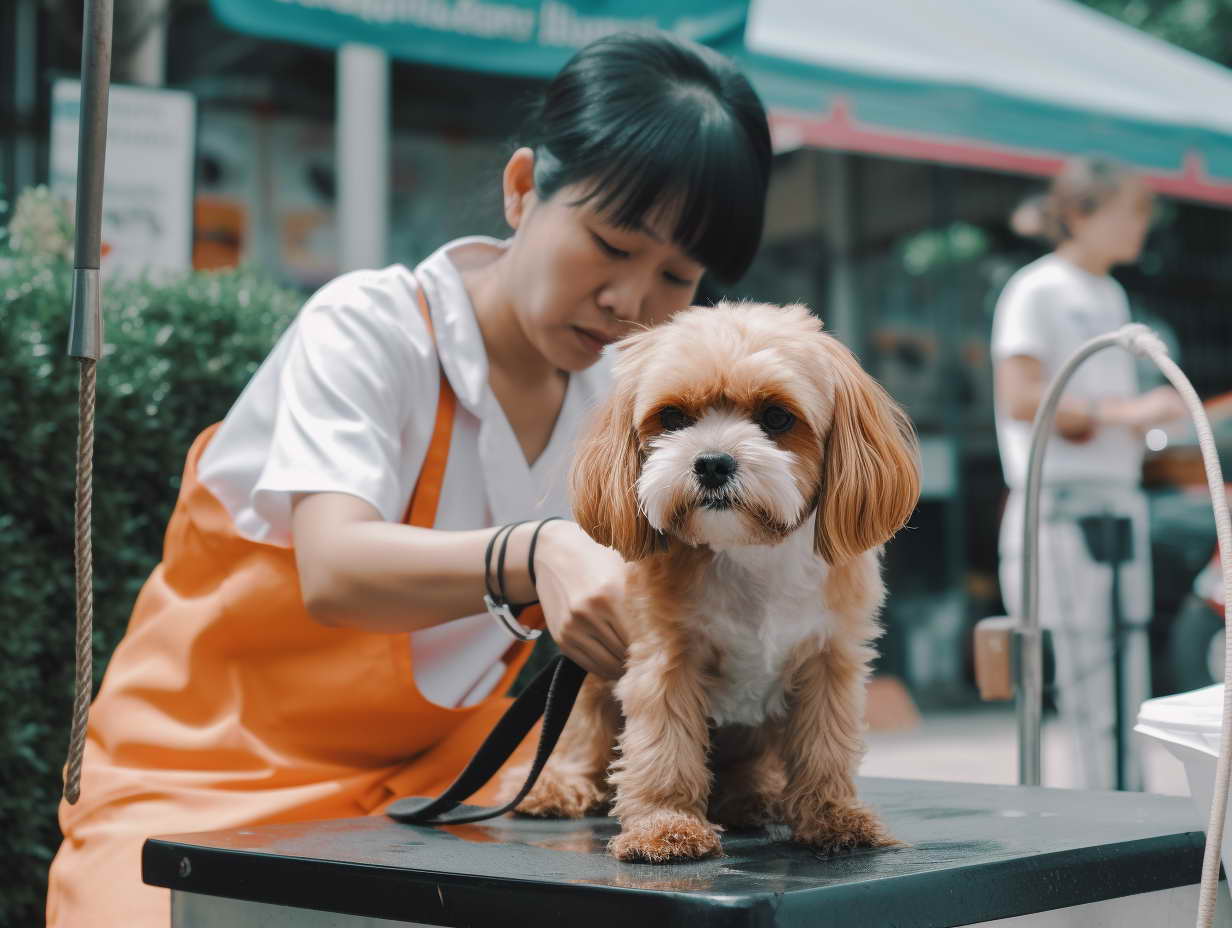
Setting Up Your Dog Grooming Salon
Create a section in your business plan that details the physical location and layout of your grooming salon. Consider factors like zoning laws, lease agreements, and interior design.
Procuring Dog Grooming Equipment and Supplies
Procuring high-quality dog grooming equipment and supplies is vital for providing top-notch grooming services and ensuring the safety and comfort of the pets in your care. As a professional dog grooming business, investing in the right tools and products will not only enhance the grooming experience but also contribute to the overall success and reputation of your salon. In this section, we’ll explore the essential equipment and supplies you need to consider when setting up your dog grooming business.
1. Grooming Tables and Workstations
Invest in sturdy and adjustable grooming tables to comfortably groom dogs of all sizes. A well-designed workstation with ample storage for grooming tools will streamline your grooming process.
2. Grooming Clippers and Blades
High-quality grooming clippers and various blade sizes are essential for achieving precise and efficient haircuts. Choose clippers suitable for different coat types, and ensure you have spare blades for replacements.
3. Shears and Scissors
Professional grooming shears and scissors are essential for shaping and finishing haircuts. Invest in different types of shears, such as straight, curved, and thinning shears, to handle various grooming styles.
4. Grooming Brushes and Combs
A variety of grooming brushes and combs are necessary to detangle and maintain different coat types. Have brushes suitable for short-haired, long-haired, and curly-coated breeds.
5. Nail Trimmers and Grinders
Accurate nail trimming is vital for a pet’s well-being. Acquire both nail trimmers and grinders to cater to the needs of different dogs and their owners’ preferences.
6. Ear Cleaners and Solutions
Gentle ear cleaners and specialized solutions are essential for keeping dogs’ ears clean and free from infections. Opt for products that are safe and recommended for pet use.
7. Shampoos and Conditioners
Stock a range of high-quality pet shampoos and conditioners suitable for various coat types and skin conditions. Consider offering hypoallergenic and organic options for sensitive pets.
8. Towels and Drying Equipment
Have an ample supply of clean and absorbent towels for drying dogs after grooming. Consider investing in drying equipment, such as forced-air dryers, for faster and more efficient drying.
9. Dental Care Products
Include dental care products like pet-safe toothpaste, toothbrushes, and dental wipes to promote good oral health for dogs.
10. Grooming Apparel and Safety Gear
Provide grooming aprons, gloves, and safety gear for yourself and your staff to ensure a hygienic and safe grooming environment.
11. Styling Accessories and Finishing Products
Keep styling accessories like bows, bandanas, and pet-safe color products for those who wish to add a finishing touch to their pet’s appearance.
12. Cleaning and Disinfecting Supplies
Maintain a clean and sanitized grooming salon with appropriate cleaning supplies and pet-friendly disinfectants.
13. Grooming Restraints and Accessories
Consider using grooming restraints and accessories to ensure the safety of both the pet and the groomer during grooming sessions.
14. Grooming Software and Record-Keeping Tools
Invest in grooming software and record-keeping tools to manage appointments, customer information, and pet grooming history efficiently.
15. Retail Products
Offer retail products like grooming tools, pet care products, and accessories for pet owners to purchase and use at home.
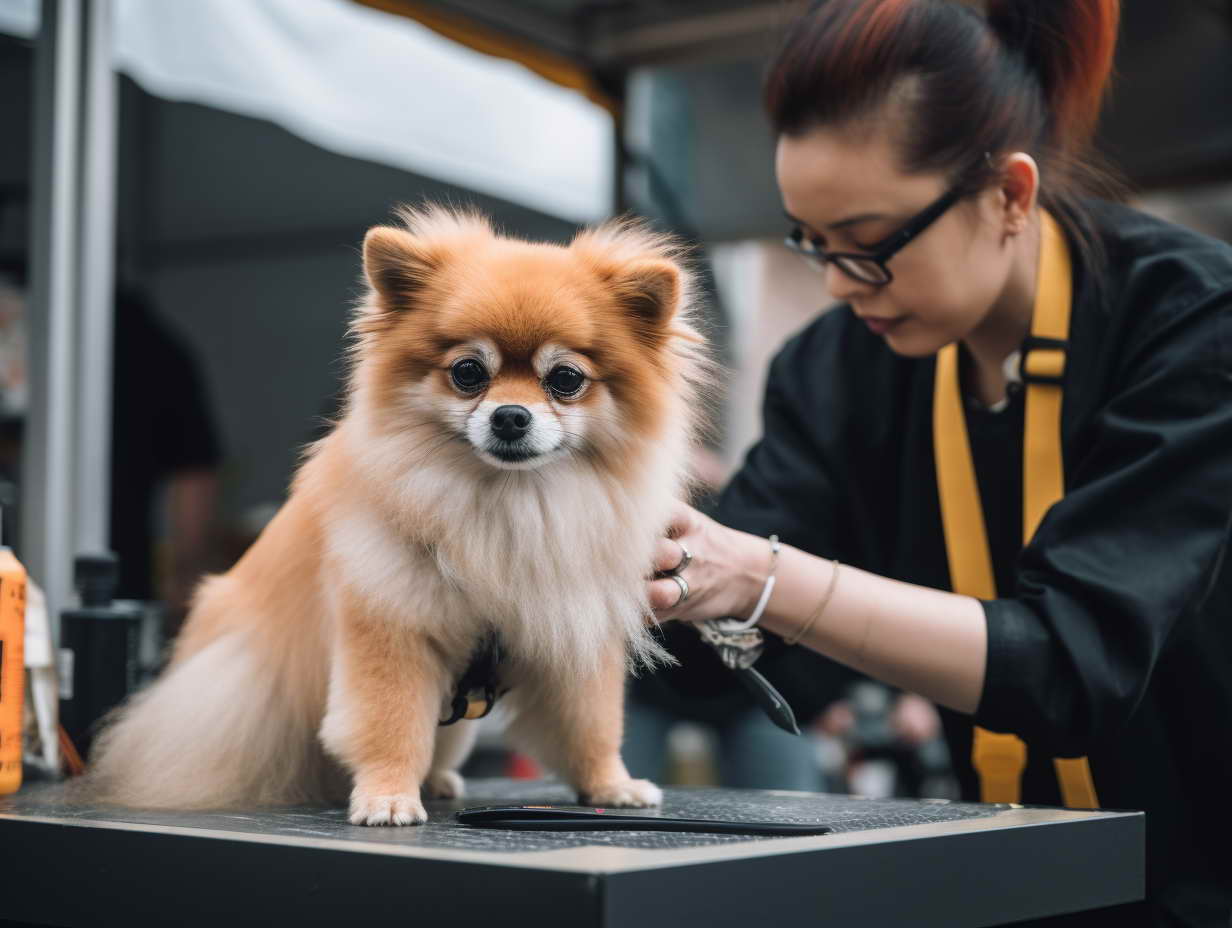
Hiring Skilled Groomers and Staff
Hiring skilled and experienced groomers and staff is essential for delivering exceptional grooming services and maintaining a positive reputation for your dog grooming business. The expertise and dedication of your team directly impact customer satisfaction and the overall success of your salon. In this section, we’ll explore effective strategies for hiring skilled groomers and staff members who are passionate about pet care and grooming.
1. Seek Experienced Groomers
Look for groomers with relevant experience in the pet grooming industry. Consider candidates who have worked with various dog breeds and are skilled in a wide range of grooming techniques. Experienced groomers are more likely to handle different temperaments and coat types effectively.
2. Emphasize Pet Handling Skills
Prioritize candidates with excellent pet-handling skills and a genuine love for animals. Groomers who can calm and comfort nervous or anxious pets during grooming sessions will ensure a positive experience for both the pets and their owners.
3. Check References and Portfolios
Request references and review portfolios of potential groomers to gauge their skills and professionalism. Contact previous employers or clients to get insights into their work ethic, grooming style, and reliability.
4. Conduct Practical Grooming Tests
Consider conducting practical grooming tests during the interview process to assess candidates’ grooming abilities. Provide a dog model for them to groom and evaluate their techniques, attention to detail, and efficiency.
5. Look for Good Communicators
Effective communication skills are essential for groomers to understand clients’ preferences and provide suitable grooming services. Seek candidates who can communicate clearly and professionally with both pet owners and team members.
6. Value Team Players
A positive and collaborative work environment is crucial for your dog grooming business’s success. Look for team players who can work harmoniously with fellow groomers and staff members to create a supportive and efficient workplace.
7. Invest in Training and Development
Consider hiring groomers who are open to continuous learning and professional development. Invest in training programs and workshops to enhance their skills and keep them updated with the latest grooming techniques and trends.
8. Prioritize Passion for Animals
Passion for animals goes beyond grooming skills. Look for candidates who genuinely care for the well-being of pets and demonstrate a commitment to providing the best care possible.
9. Assess Customer Service Skills
Groomers with strong customer service skills can build lasting relationships with pet owners and create a loyal customer base. Seek candidates who are friendly, patient, and able to address customer inquiries and concerns effectively.
10. Consider Diversity and Inclusivity
Promote a diverse and inclusive work environment by considering candidates from various backgrounds and cultures. A diverse team can bring different perspectives and creativity to your grooming salon.
11. Offer Competitive Compensation
Attract skilled groomers by offering competitive compensation packages that include benefits and incentives. A well-compensated team is more likely to stay motivated and committed to their work.
12. Provide a Supportive Work Environment
Create a supportive work environment where groomers and staff feel valued and appreciated. Recognize their efforts and provide opportunities for career growth and advancement within the company.
13. Prioritize Pet Safety Training
Ensure that all groomers and staff members receive proper training in pet safety and first aid. Prioritizing the safety and well-being of the pets in your care will instill confidence in pet owners.
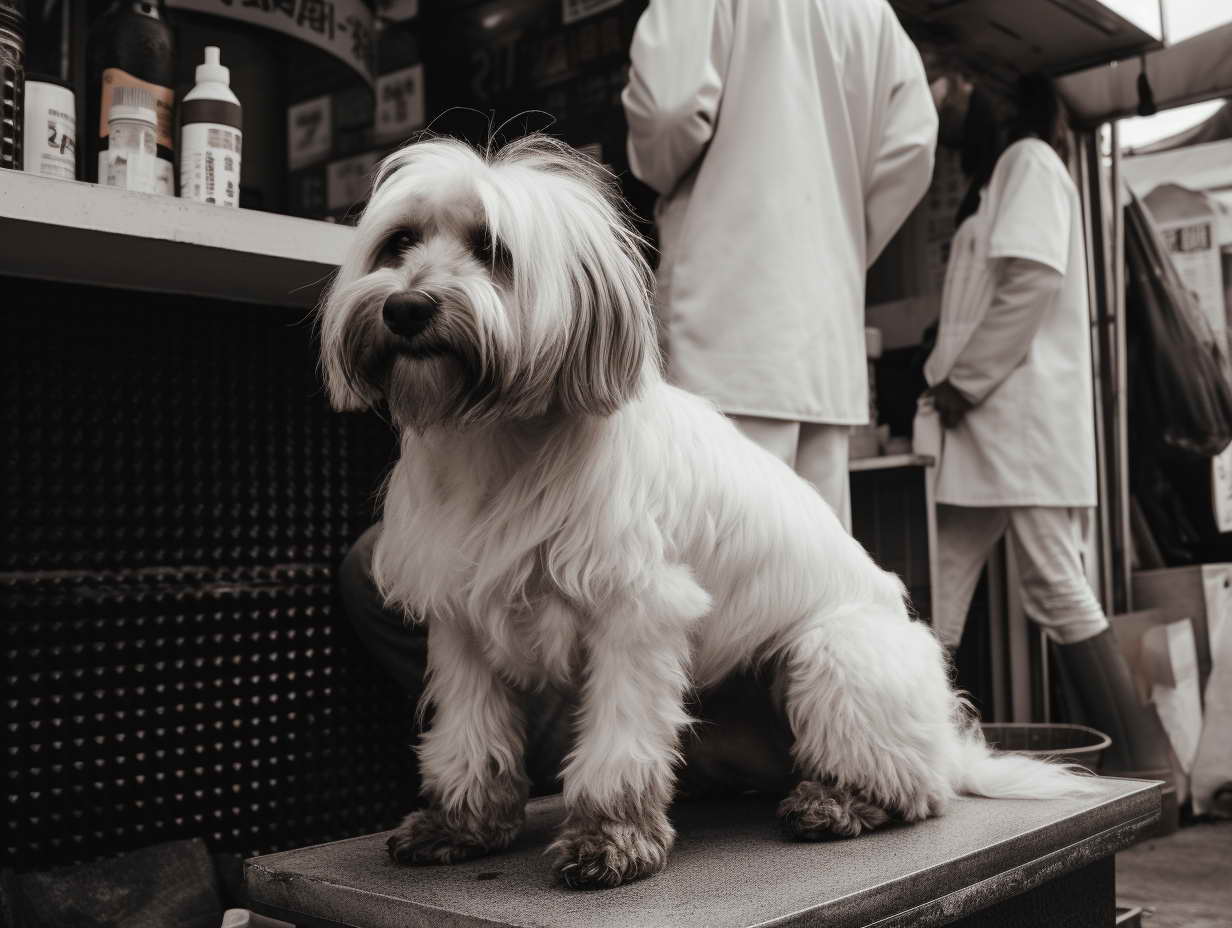
Marketing and Branding Strategies
Effective marketing and branding strategies are essential for promoting your dog grooming business, attracting customers, and building a strong and recognizable brand presence. By implementing well-thought-out marketing initiatives, you can reach your target audience, communicate your unique value proposition, and establish your grooming salon as a trusted and preferred choice among pet owners. In this section, we’ll explore various marketing and branding strategies to help your dog grooming business thrive in the competitive pet industry.
1. Develop a Strong Brand Identity
Create a compelling brand identity that reflects your grooming salon’s values, mission, and personality. Choose a memorable business name, design a logo, and select a consistent color scheme and brand elements for all marketing materials.
2. Build an Informative Website
Design a user-friendly and mobile-responsive website that showcases your grooming services, pricing, and customer testimonials. Use engaging content and high-quality images to captivate visitors and encourage them to book grooming appointments.
3. Utilize Local SEO
Optimize your website and online presence for local SEO to appear in search engine results when pet owners look for grooming services in your area. Use location-based keywords and claim your business on Google My Business for better visibility.
4. Leverage Social Media Marketing
Engage with pet owners on popular social media platforms like Facebook, Instagram, and Twitter. Share appealing content, pet grooming tips, before-and-after photos, and client success stories to create a loyal and interactive online community.
5. Offer Promotions and Loyalty Programs
Attract new customers and retain existing ones by offering promotions, discounts, and loyalty programs. Consider referral rewards to encourage satisfied customers to recommend your grooming salon to their friends and family.
6. Collaborate with Pet Influencers
Partner with popular pet influencers or bloggers on social media to promote your grooming services. Influencers can reach a wide audience of pet owners and add credibility to your brand.
7. Create Engaging Content
Produce valuable and engaging content through blog posts, videos, or infographics. Share grooming tips, pet care advice, and informative content to position your grooming salon as an authority in the pet industry.
8. Participate in Community Events
Get involved in local pet-related events, adoption fairs, or charity initiatives to demonstrate your commitment to the community and gain exposure for your grooming business.
9. Encourage Online Reviews
Request satisfied customers to leave positive reviews on platforms like Google, Yelp, or social media. Positive reviews act as social proof and boost your grooming salon’s reputation.
10. Offer Outstanding Customer Service
Deliver exceptional customer service and go the extra mile to exceed pet owners’ expectations. Happy customers are more likely to share their positive experiences with others, leading to word-of-mouth referrals.
11. Create Educational Workshops
Organize educational workshops or grooming demonstrations to educate pet owners about proper grooming techniques and pet care. These events can attract potential customers and showcase your expertise.
12. Implement Email Marketing
Build an email subscriber list and use email marketing to keep customers informed about promotions, special offers, and upcoming events. Personalized emails can foster a sense of connection and loyalty.
13. Sponsor Pet-Related Events
Consider sponsoring local pet-related events or sports teams to increase brand visibility and demonstrate your support for pet welfare.
14. Utilize Online Advertising
Run targeted online advertising campaigns on platforms like Google Ads and social media to reach potential customers in your local area.
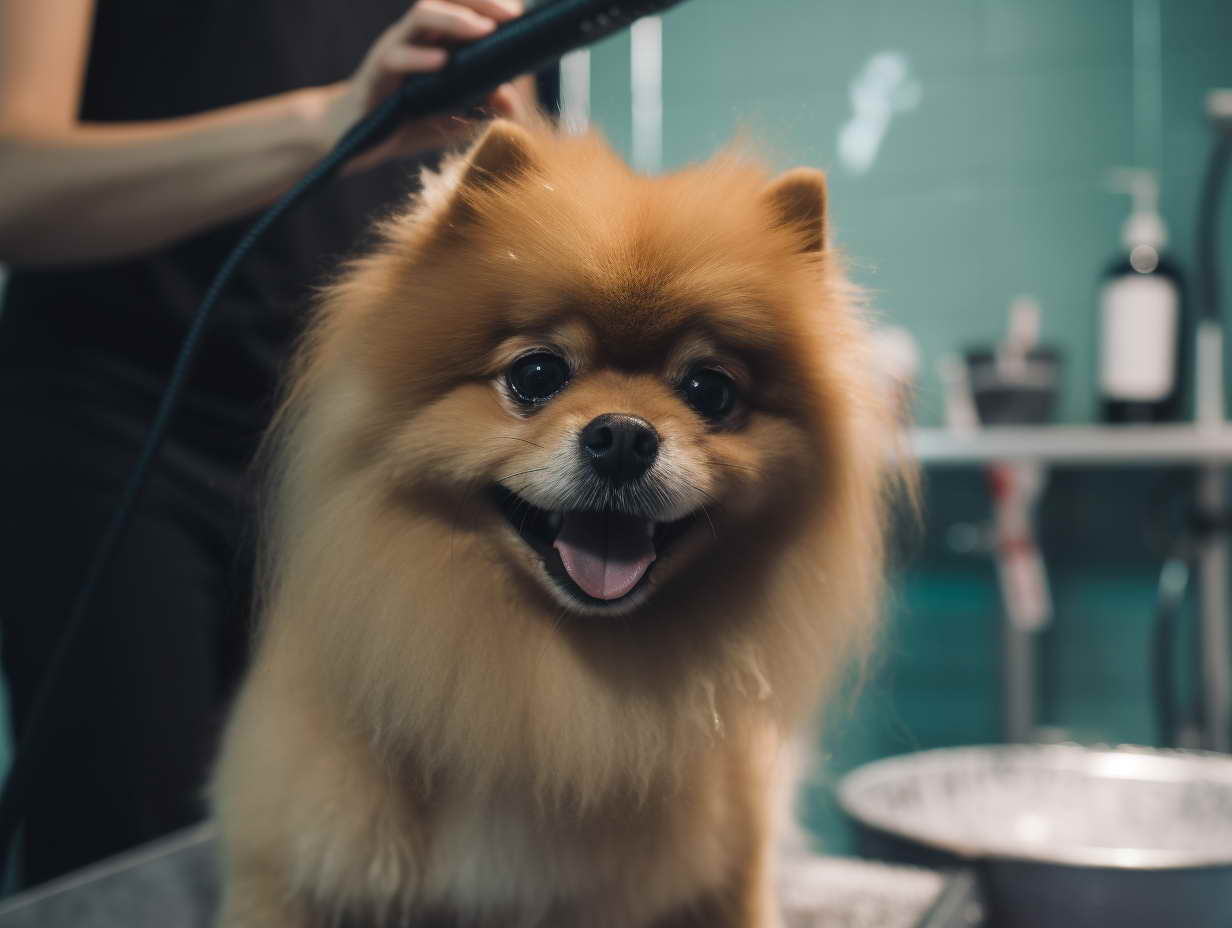
Building an Online Presence
In today’s digital age, establishing a robust online presence is crucial for the success of your dog grooming business. An effective online presence allows you to reach a broader audience, showcase your grooming services, and engage with potential customers in a meaningful way. In this section, we’ll explore various strategies to build a strong and impactful online presence for your grooming salon.
1. Create a User-Friendly Website
Develop a professional and user-friendly website that serves as the virtual face of your grooming business. Ensure the website is easy to navigate, visually appealing, and mobile-responsive, providing a seamless browsing experience for visitors.
2. Optimize for Search Engines (SEO)
Implement search engine optimization (SEO) techniques to improve your website’s visibility in search engine results. Use relevant keywords related to dog grooming, your location, and your services to attract organic traffic.
3. Engaging Content Marketing
Produce valuable and engaging content on your website’s blog section. Share grooming tips, pet care advice, before-and-after grooming stories, and other informative content to establish your grooming salon as a reliable source of pet information.
4. Utilize Social Media Platforms
Maintain an active presence on popular social media platforms like Facebook, Instagram, Twitter, and Pinterest. Share visually appealing content, client success stories, and behind-the-scenes glimpses to connect with pet owners.
5. Engage with Online Communities
Participate in online pet communities and forums to engage with pet owners and provide helpful grooming advice. Building a positive reputation in these communities can lead to word-of-mouth referrals.
6. Showcase Before-and-After Photos
Display compelling before-and-after photos of your grooming work on your website and social media platforms. Visual evidence of your grooming skills can instill confidence in potential customers.
7. Utilize Online Booking and Scheduling
Implement an online booking and scheduling system on your website to make it easy for customers to book grooming appointments at their convenience.
8. Respond Promptly to Inquiries
Respond promptly to customer inquiries and messages received through your website, social media, or email. Quick and attentive responses build trust and show that you value your customers’ time.
9. Encourage Online Reviews and Testimonials
Request satisfied customers to leave positive reviews and testimonials on platforms like Google, Yelp, and your website. Positive feedback helps build credibility and attracts new customers.
10. Run Online Advertising Campaigns
Invest in online advertising campaigns on platforms like Google Ads and social media to reach a targeted audience and promote your grooming services to potential customers.
11. Leverage Email Marketing
Build an email subscriber list and use email marketing to keep customers informed about promotions, special offers, and upcoming events. Personalized emails can strengthen customer loyalty.
12. Showcase Groomer Profiles
Introduce your groomers and staff on your website, providing information about their experience, passion for pets, and dedication to providing top-notch grooming services.
13. Utilize Online Directories
List your grooming salon in online directories, local business listings, and pet-related websites to improve your online visibility and accessibility to potential customers.
14. Share Educational Videos
Create and share educational grooming videos on YouTube and social media to demonstrate grooming techniques, pet care tips, and behind-the-scenes glimpses of your salon.
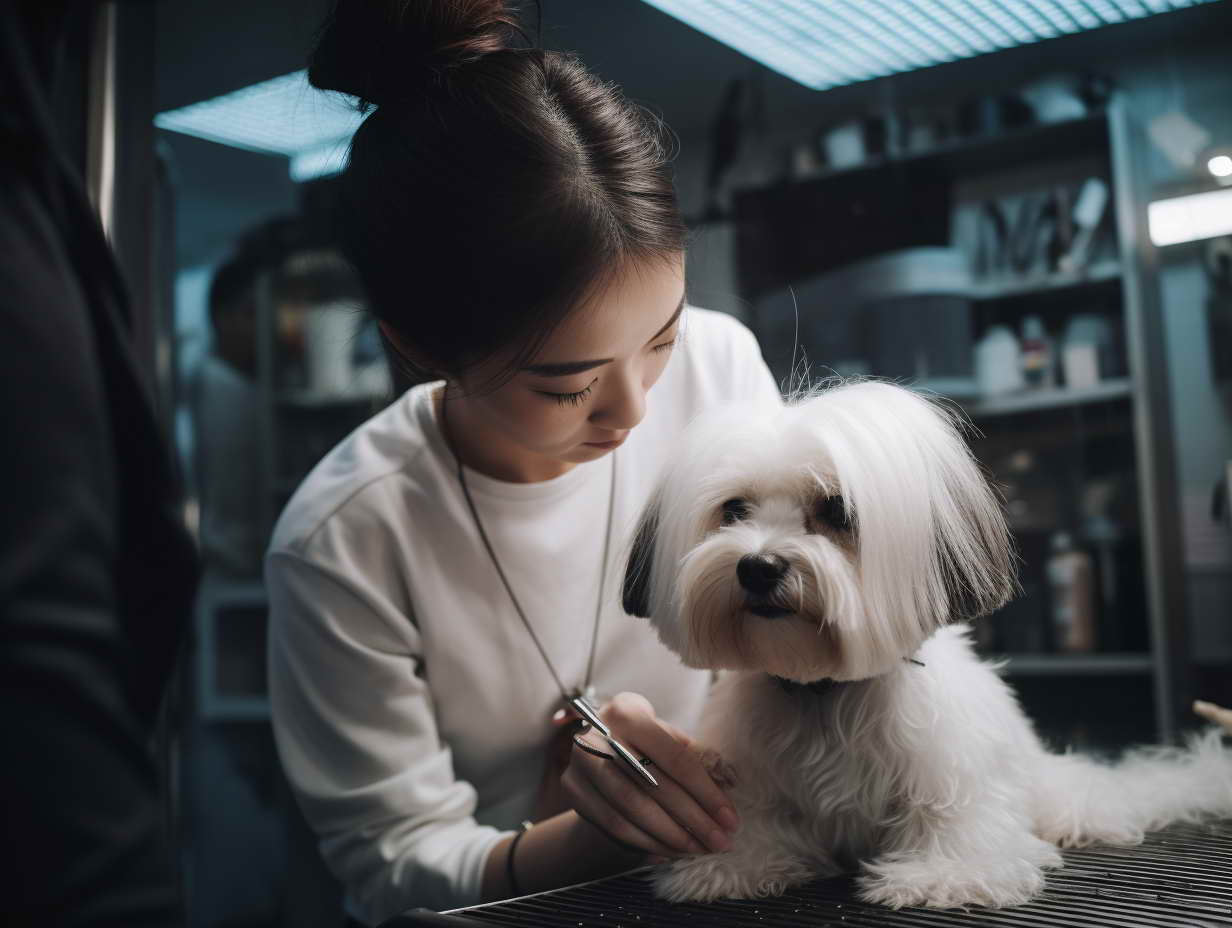
Offering Exceptional Customer Service
Exceptional customer service is the cornerstone of a successful dog grooming business. Providing a positive and personalized experience for pet owners not only fosters customer loyalty but also generates word-of-mouth referrals, enhancing your salon’s reputation in the pet grooming industry. In this section, we’ll explore various strategies to offer outstanding customer service that leaves a lasting impression on your clients.
1. Personalized Consultations
Conduct personalized consultations with pet owners before each grooming session. Listen attentively to their grooming preferences, pet’s specific needs, and any concerns they may have. Tailor your grooming approach to meet individual pet owners’ expectations.
2. Warm and Friendly Greetings
Welcome pet owners and their furry companions with warm and friendly greetings when they arrive at your grooming salon. Create a welcoming atmosphere that puts both pets and their owners at ease.
3. Respect Pet Owners’ Time
Respect pet owners’ time by adhering to scheduled grooming appointments. Minimize wait times and communicate any potential delays promptly. Valuing their time demonstrates professionalism and consideration.
4. Communication and Updates
Maintain clear and open communication with pet owners throughout the grooming process. Provide updates on their pet’s well-being, grooming progress, and any special considerations that may arise during the session.
5. Handle Pet Anxiety and Nervousness
Be patient and compassionate when handling pets that may feel anxious or nervous during grooming. Use gentle techniques and calming measures to ensure a stress-free grooming experience.
6. Attention to Detail
Pay close attention to grooming details to ensure every pet leaves your salon looking and feeling their best. A thorough and meticulous approach showcases your commitment to providing top-notch grooming services.
7. Follow-Up and Aftercare Advice
Follow up with pet owners after grooming sessions to check on their satisfaction and offer aftercare advice. Provide tips on maintaining their pet’s coat, hygiene, and overall well-being between grooming appointments.
8. Addressing Customer Concerns
Handle customer concerns or complaints promptly and professionally. Take the time to understand their issues and work towards finding a satisfactory resolution. Turning a negative experience into a positive one can strengthen customer loyalty.
9. Provide Pet Treats and Rewards
Offer pet treats and rewards after grooming sessions as a positive reinforcement. This gesture leaves a favorable impression and makes the grooming experience enjoyable for pets.
10. Special Treatments for Special Occasions
Surprise pet owners with special treatments or themed grooming services for occasions like birthdays or holidays. Going the extra mile to celebrate these moments will be appreciated by both pets and their owners.
11. Send Thank-You Notes
Send personalized thank-you notes or emails to express your gratitude for choosing your grooming salon. This small gesture showcases your appreciation for their business.
12. Gather Customer Feedback
Regularly seek feedback from pet owners through surveys or in-person conversations. Valuable insights from customers can help you continuously improve your services and exceed their expectations.
13. Pet-Friendly Waiting Area
If your grooming salon allows for pet owners to wait during grooming sessions, create a pet-friendly waiting area with amenities like water bowls and toys for their pets’ comfort.
14. Loyalty and Referral Programs
Implement loyalty programs to reward repeat customers and referral programs to incentivize word-of-mouth recommendations. Acknowledging and rewarding customer loyalty encourages repeat business.
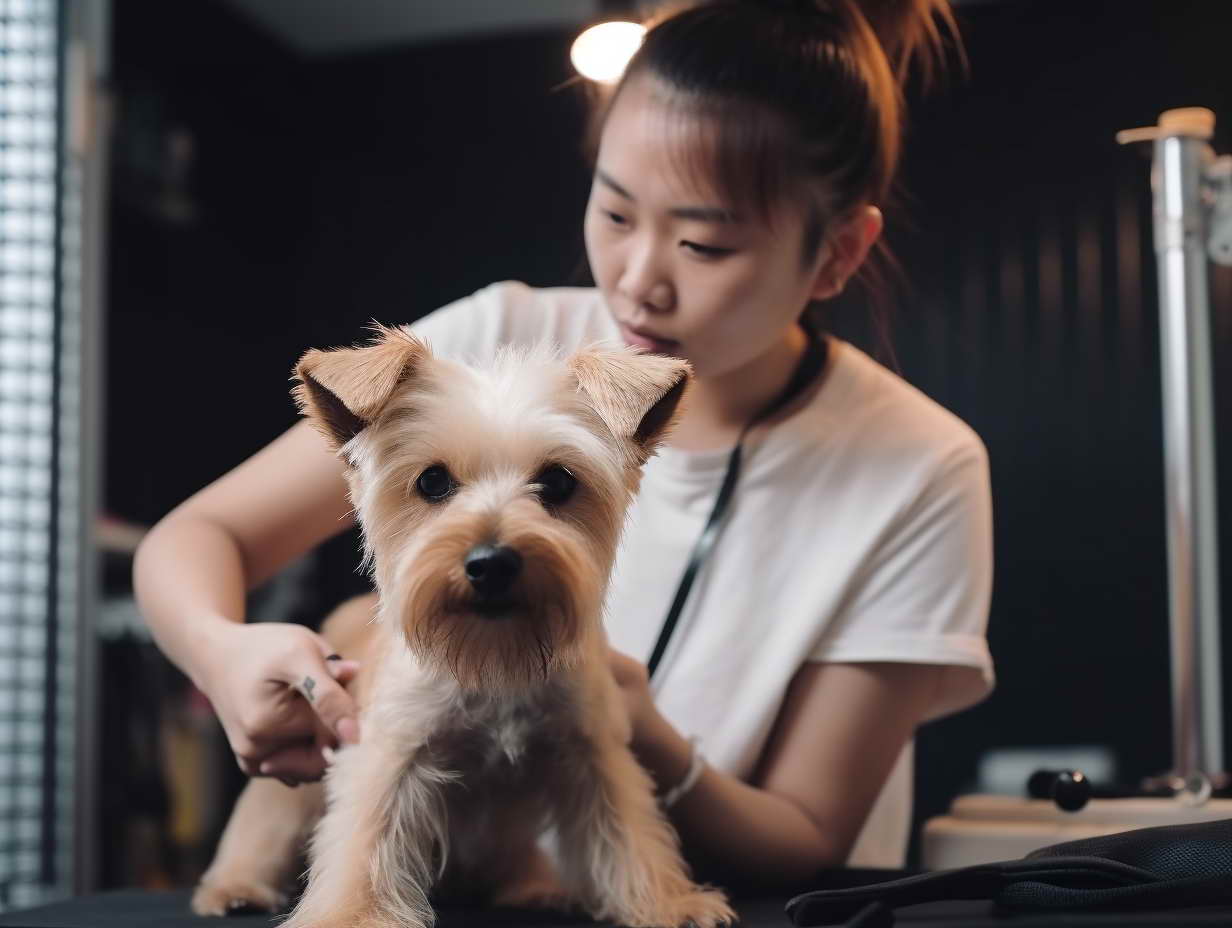
Handling Pet Health and Safety
Ensuring the health and safety of the pets in your care is of utmost importance for any responsible dog grooming business. Pet owners trust you to provide a safe and nurturing environment for their beloved companions during grooming sessions. By implementing proper health and safety protocols, you can create a salon that prioritizes the well-being of the pets and offers peace of mind to their owners. In this section, we’ll explore various strategies for handling pet health and safety in your grooming salon.
1. Pet Health Assessments
Conduct thorough health assessments of each pet before beginning the grooming process. Look for any signs of illness, skin conditions, or injuries. If you notice any health concerns, inform the pet owner and recommend seeking veterinary advice before proceeding with the grooming.
2. Vaccination Verification
Request vaccination records from pet owners to ensure that all pets entering your grooming salon are up-to-date on their vaccinations. This precaution helps prevent the spread of contagious diseases among pets.
3. Safe Handling and Restraints
Train your groomers and staff in safe pet handling and restraint techniques. Use gentle and humane methods to ensure the safety and comfort of the pets during grooming sessions.
4. Appropriate Grooming Techniques
Use appropriate grooming techniques suitable for each pet’s breed, age, and individual needs. Be cautious when handling sensitive areas such as ears, eyes, and paws, and use suitable grooming tools and products.
5. Pet Anxiety and Stress Reduction
Recognize and address signs of pet anxiety or stress during grooming sessions. Implement calming techniques, such as gentle reassurance and low-stress handling, to create a relaxing environment for the pets.
6. Proper Sanitization and Disinfection
Maintain a clean and sanitized grooming environment to prevent the spread of germs and bacteria. Regularly clean and disinfect grooming tools, equipment, workstations, and surfaces.
7. Safe Grooming Products
Use pet-safe grooming products, shampoos, and conditioners that are free from harmful chemicals and irritants. Be aware of any pet allergies or sensitivities and avoid using products that could cause adverse reactions.
8. Supervision and Monitoring
Supervise pets throughout the grooming process to ensure their safety and well-being. Monitor their behavior, physical condition, and overall comfort during grooming.
9. First Aid and Emergency Preparedness
Train your groomers and staff in basic pet first aid and have a well-equipped first aid kit on hand. Be prepared to handle minor injuries or health issues that may arise during grooming.
10. Adequate Ventilation and Temperature Control
Maintain proper ventilation and temperature control in your grooming salon to ensure a comfortable environment for pets. Avoid exposing pets to extreme temperatures or stuffy conditions.
11. Allergy and Medical History Records
Keep records of pet allergies and medical histories to be aware of any specific health concerns or conditions that may require special attention during grooming.
12. Regular Health Checkups
Encourage pet owners to schedule regular health checkups for their pets with a veterinarian. Regular veterinary visits help identify and address health issues promptly.
13. Professional Training and Certifications
Invest in ongoing professional training and certifications for your groomers and staff. Staying updated on best practices in pet health and safety ensures the highest standard of care for the pets in your salon.
14. Clear Pet Release Forms
Have pet owners sign clear release forms that acknowledge any potential risks associated with grooming and ensure they are informed about the grooming process.
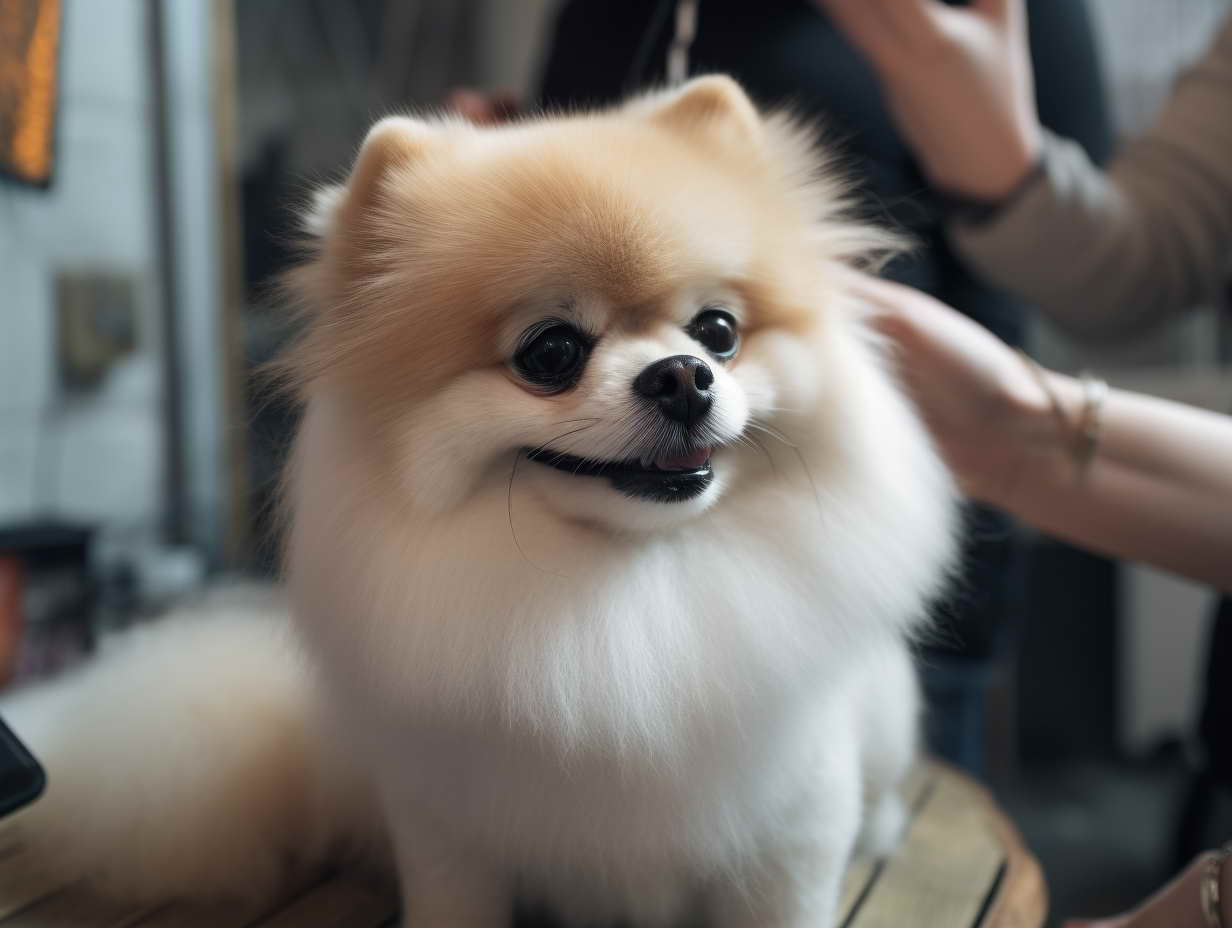
Pricing Your Dog Grooming Services
Determining the right pricing for your dog grooming services is a critical aspect of running a successful grooming business. Setting competitive and transparent prices not only ensures that your services are affordable to pet owners but also helps you cover your operating costs and achieve profitability. In this section, we’ll explore various strategies for pricing your dog grooming services to strike the right balance between value and financial sustainability.
1. Consider the Complexity of Grooming Services
Base your pricing on the complexity of grooming services required for each pet. Different breeds and coat types may demand varying levels of effort and time, so adjust your prices accordingly.
2. Size and Weight of the Pet
Take into account the size and weight of the pet when setting prices. Larger dogs may require more extensive grooming, which can influence the overall cost.
3. Grooming Package Options
Offer different grooming package options to cater to various customer needs and budgets. Provide basic packages for essential grooming and deluxe packages with additional services like nail grinding or teeth cleaning.
4. Additional Services and Add-ons
Price additional services and add-ons separately, allowing pet owners to customize grooming packages based on their preferences and pet’s specific requirements.
5. Competitor Analysis
Conduct a competitor analysis to understand the pricing landscape in your area. Research other local grooming salons and their service offerings to ensure your prices are competitive and attractive to customers.
6. Factor in Overhead Costs
Calculate your overhead costs, including rent, utilities, grooming supplies, and staff salaries, to determine the minimum pricing required to cover your expenses.
7. Value-Added Services
Consider offering value-added services that set your grooming salon apart from competitors. This may include special spa treatments, organic grooming products, or pet grooming education.
8. Discounted Packages or Loyalty Programs
Implement discounted packages for customers who book multiple grooming sessions in advance. Additionally, offer loyalty programs to reward repeat customers with exclusive discounts or free add-ons.
9. Special Offers and Seasonal Promotions
Run special offers and seasonal promotions to attract new customers and generate interest in your grooming services. Offer discounts during slow periods or holiday-themed grooming packages.
10. Transparent Pricing
Be transparent with your pricing by clearly displaying it on your website, social media, and in your grooming salon. Avoid hidden fees and surprise charges to build trust with customers.
11. Monitor Industry Trends
Stay updated on industry trends and pricing standards within the pet grooming industry. Consider adjusting your prices periodically to reflect changing market conditions.
12. Assess Customer Feedback
Seek feedback from customers on your pricing and service offerings. Use customer insights to fine-tune your pricing strategy and make adjustments that resonate with your target market.
13. Bundle Services
Bundle grooming services with other pet-related services you may offer, such as pet daycare or training. Bundling services can create a sense of convenience and value for pet owners.
14. Educational Pricing
Educate pet owners about the value of your grooming services and the benefits they provide to their pets. Demonstrating the expertise and care behind your prices can justify higher pricing.
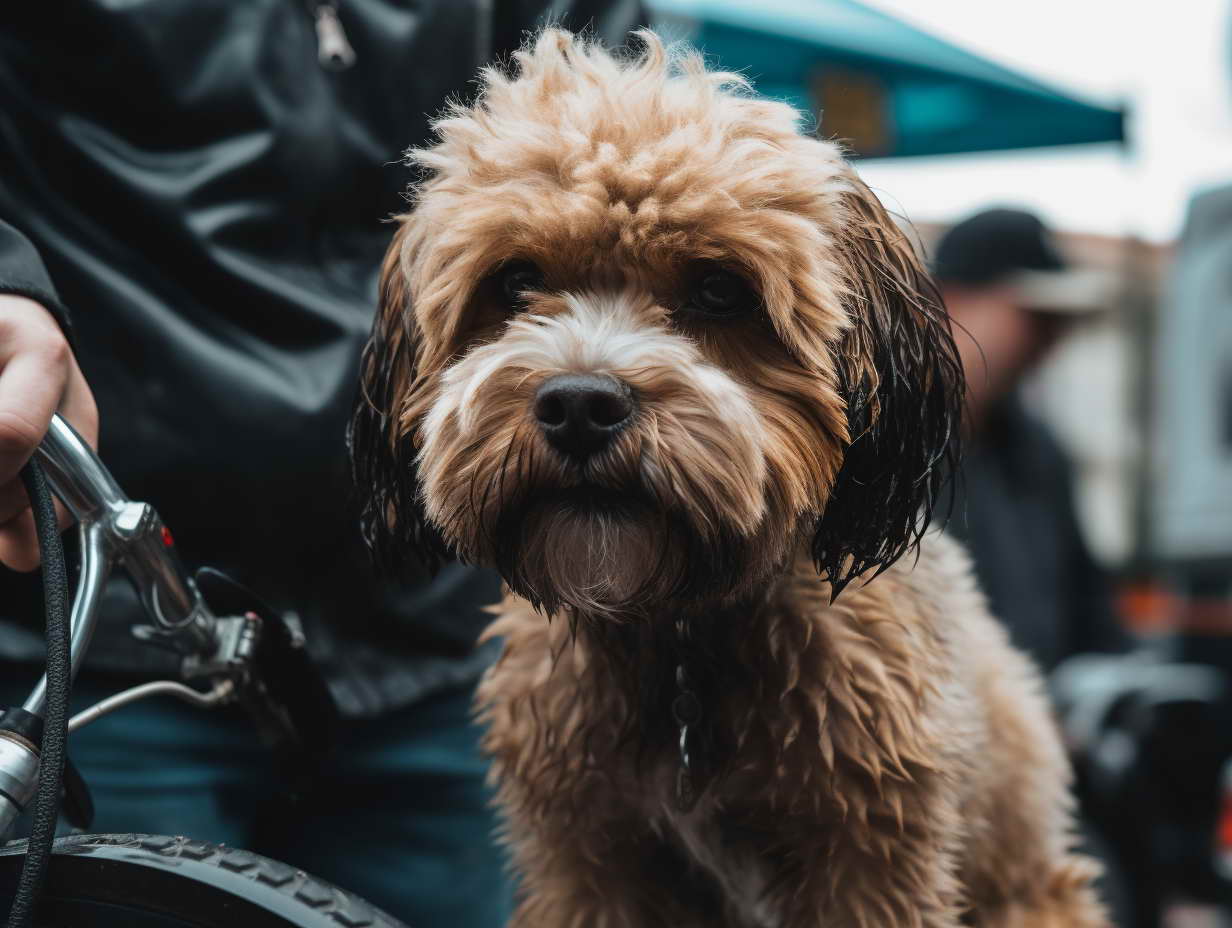
Managing Finances and Accounting
Efficiently managing finances and accounting is vital for the long-term success and stability of your dog grooming business. Keeping track of income, expenses, and profits allows you to make informed decisions, maintain financial health, and plan for future growth. In this section, we’ll explore various strategies for effectively managing your grooming salon’s finances and accounting.
1. Establish a Budget
Create a comprehensive budget that outlines your expected income and expenses. Consider all aspects of your grooming salon, including rent, utilities, grooming supplies, marketing costs, and staff salaries.
2. Separate Business and Personal Finances
Open a separate bank account for your dog grooming business to keep business finances distinct from personal finances. This separation simplifies bookkeeping and ensures accurate financial records.
3. Record Daily Transactions
Maintain detailed records of all daily transactions, including income from grooming services, retail sales, and any expenses incurred. Use accounting software or spreadsheets to organize your financial data.
4. Monitor Cash Flow
Regularly monitor your cash flow to understand how money is coming in and going out of your business. Ensure you have enough funds to cover essential expenses and plan for periods with fluctuating revenue.
5. Track Accounts Receivable
Keep track of accounts receivable, which includes outstanding payments from customers who have received grooming services but haven’t paid yet. Send timely reminders to ensure timely payment.
6. Control Operating Costs
Identify areas where you can control operating costs without compromising the quality of your grooming services. Negotiate with suppliers for better prices on grooming supplies, utilities, or rent if possible.
7. Review Profit Margins
Regularly review your profit margins to gauge the financial health of your grooming salon. Understanding your profit margins helps you make pricing adjustments and identify opportunities for improvement.
8. Prepare for Tax Season
Stay organized throughout the year to make tax season smoother. Keep all necessary financial records and work with a tax professional to accurately file your business taxes.
9. Plan for Seasonal Variations
Plan for seasonal variations in revenue and expenses in the pet grooming industry. Budget for slower periods and allocate resources strategically during peak seasons.
10. Implement Invoicing System
Use a standardized invoicing system to send professional and itemized invoices to customers. This system helps avoid confusion and ensures timely payment.
11. Regular Financial Review
Schedule regular financial reviews to assess your grooming salon’s financial performance. Analyze financial reports, identify trends, and adjust your business strategies accordingly.
12. Monitor Inventory
Keep a close eye on your grooming supplies inventory. Avoid overstocking items that may expire or become outdated before use.
13. Seek Professional Financial Advice
Consult with a financial advisor or accountant who specializes in small businesses or the pet industry. Their expertise can provide valuable insights and help you make informed financial decisions.
14. Plan for Growth and Expansion
As your grooming business grows, plan for expansion and potential additional costs. Evaluate the feasibility of opening new locations or offering new services based on your financial capabilities.

Expanding Your Dog Grooming Business
Expanding your dog grooming business is an exciting endeavor that opens up new opportunities for growth, increased revenue, and a broader customer base. However, expanding requires careful planning, strategic decision-making, and a clear vision for the future of your grooming salon. In this section, we’ll explore various strategies and considerations for successfully expanding your dog grooming business.
1. Assess Market Demand
Conduct thorough market research to assess the demand for pet grooming services in your area. Identify potential gaps in the market and understand the preferences and needs of your target customers.
2. Analyze Financial Feasibility
Evaluate your grooming salon’s financial health and assess whether you have sufficient funds to support expansion. Consider obtaining financing options or seeking investors if needed.
3. Add New Services
Consider expanding your service offerings to attract a broader range of customers. Introducing additional services such as pet daycare, training, or mobile grooming can enhance your competitive edge.
4. Open Additional Locations
Explore the possibility of opening new grooming salon locations in different neighborhoods or cities. Expanding to new areas can increase your market reach and customer base.
5. Increase Staff and Resources
Hire additional groomers and staff members to accommodate the increased demand for your services. Ensuring you have enough resources to meet the needs of more customers is crucial for successful expansion.
6. Enhance Marketing Efforts
Strengthen your marketing efforts to promote your expanded services and reach a wider audience. Utilize online advertising, social media marketing, and targeted promotions to generate interest.
7. Establish a Loyalty Program
Implement a loyalty program to reward repeat customers and encourage them to continue using your grooming services. Loyalty programs foster customer retention and word-of-mouth referrals.
8. Collaborate with Pet Businesses
Build strategic partnerships with pet-related businesses, such as veterinarians, pet stores, or dog trainers. Collaborative efforts can expand your customer base through mutual referrals.
9. Embrace Technology
Incorporate technology to streamline your operations and enhance customer experience. Implement online booking systems, digital payment options, and customer relationship management (CRM) software.
10. Invest in Staff Training
Provide ongoing training and professional development for your groomers and staff. Well-trained employees deliver high-quality services and contribute to the success of your expansion.
11. Engage in Community Outreach
Participate in community events and pet-related initiatives to raise awareness of your grooming business. Being actively involved in the community can foster goodwill and attract local customers.
12. Optimize Customer Experience
Ensure a positive and memorable customer experience by delivering exceptional grooming services, personalized attention, and outstanding customer service.
13. Monitor Expansion Progress
Continuously monitor the progress of your expansion efforts and assess the impact on your grooming business. Be prepared to make adjustments or pivot your strategies as needed.
14. Seek Feedback from Customers
Seek feedback from customers about your expanded services and overall experience. Customer insights can guide improvements and ensure your grooming salon meets their evolving needs.
FAQs (Frequently Asked Questions)
1. What qualifications do I need to start a dog grooming business?
While formal qualifications aren’t mandatory, obtaining certifications in pet grooming can enhance your credibility and skills.
2. How much does it cost to start a dog grooming business?
The cost of starting a dog grooming business can vary based on factors like location, salon size, and equipment. On average, it can range from $10,000 to $50,000.
3. How do I attract more customers to my dog grooming salon?
Offering promotions, maintaining an active online presence, and providing exceptional services can attract more customers.
4. Is it essential to use organic grooming products?
While not mandatory, using organic grooming products can appeal to eco-conscious pet owners and showcase your commitment to pet health.
5. Should I consider mobile grooming services?
Mobile grooming services can be a great option if you want to cater to pet owners who prefer the convenience of grooming at their doorstep.
6. How do I handle difficult or aggressive dogs during grooming sessions?
Patience, proper training, and using calming techniques can help manage difficult or aggressive dogs during grooming.
Conclusion
Starting a dog grooming business can be a fulfilling journey for passionate pet lovers. By following this comprehensive guide and creating a well-structured dog grooming business plan, you’ll be on your way to success in the thriving pet grooming industry.
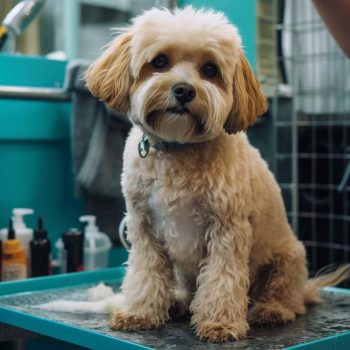
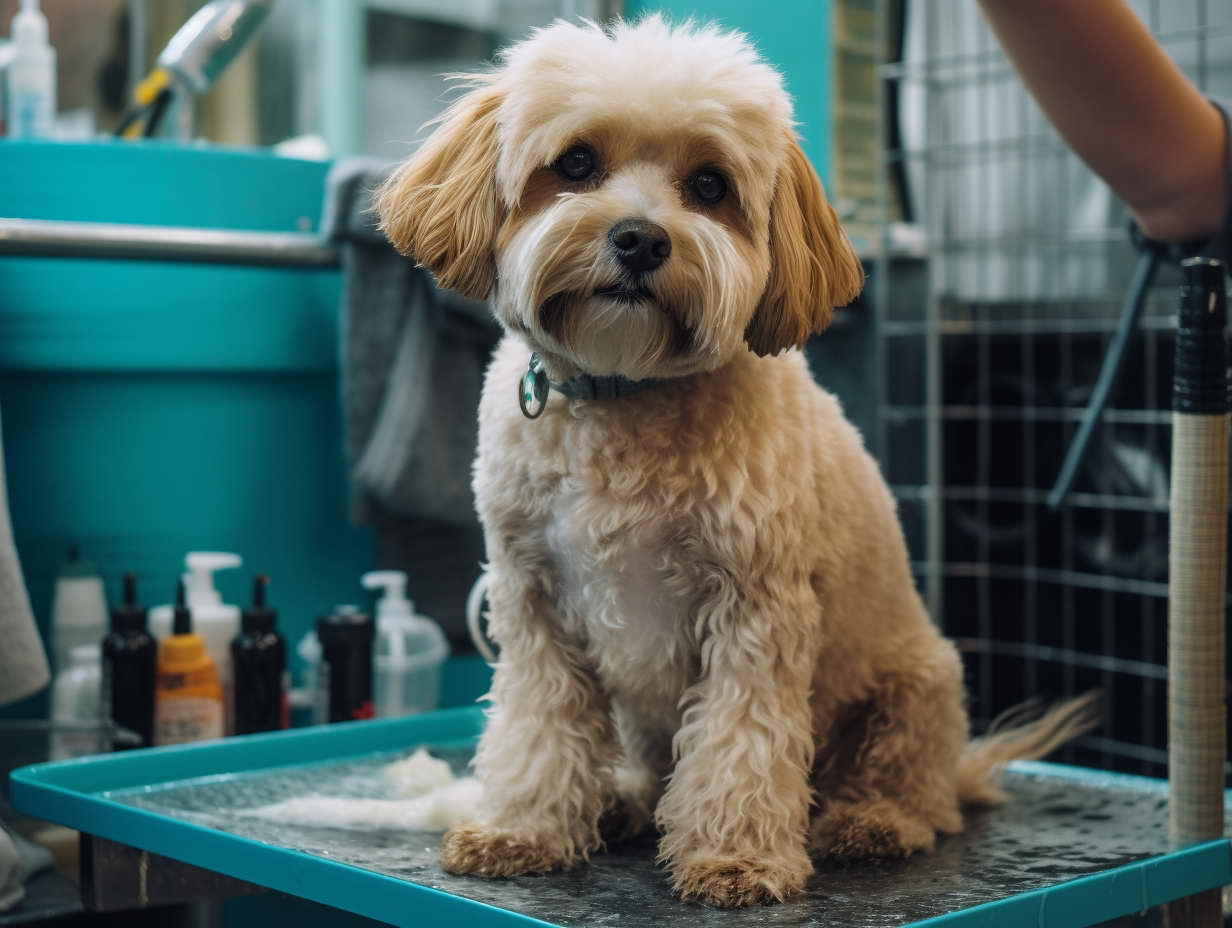
Leave a Reply